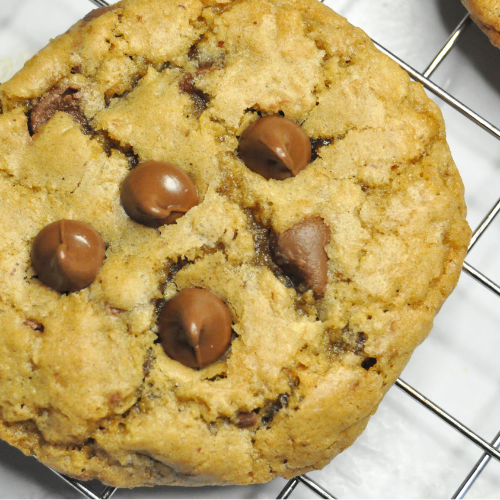Brown butter is a secret weapon in baking. It adds a deep, nutty flavor that enhances everything from cookies to cakes and beyond. If you’ve come across a recipe that’s making you feel a bit apprehensive because it calls for browned butter, this guide will walk you through the process. Grab your aprons and get ready to embark on a baking journey to making your best batch of cookies yet as we learn how to brown butter.
What is Brown Butter?
Brown butter, or “beurre noisette,” is simply butter that has been melted and cooked until the milk solids turn golden brown. This process creates a rich, toasty aroma and a slightly caramelized flavor that adds incredible depth to baked goods.

How Brown Butter Enhances Baked Goods:
Browned butter brings a layer of complexity and richness that regular butter cannot. The caramelized milk solids introduce deep, toasty notes that amplify flavors in your favorite baked goods. Here’s how it enhances specific treats:
- Cookies – Gives chocolate chip, sugar, and shortbread cookies a warm, nutty depth. Check out our brown butter chocolate chip cookie recipe.
- Cakes & Muffins – Adds a sophisticated, slightly caramel-like undertone.
- Frosting – Enhances buttercream with a richer, more complex taste.
- Brownies – Elevates overall flavor, making them more indulgent.
- Pie Crusts – Introduces a subtle nuttiness that complements fruit and nut fillings.
What You’ll Need:
- Unsalted butter (use as much as your recipe calls for)
- A light-colored saucepan (so you can easily see the butter browning)
- A heatproof spatula or whisk
- A small bowl (for transferring the butter)
Step by Step Instructions:
Melt the butter
- Cut the butter into small pieces to ensure even melting.
- Place it in a light-colored saucepan over medium heat. The light color helps you see the browning process clearly.
Watch for Bubbling and Foaming
- The butter will begin to melt and then foam as the water content evaporates.
- Stir occasionally to prevent the milk solids from sticking to the bottom.
Listen and Look for Color Changes
- After a few minutes, the butter will start to crackle as the water fully cooks off.
- The milk solids at the bottom will begin turning golden brown, and you’ll notice a nutty aroma.
Remove from Heat at the Right Time
- Once the butter is a warm amber color and smells toasty, immediately remove it from the heat to prevent burning.
- Continue stirring for a few seconds as the residual heat will deepen the browning slightly.
Transfer and cool
- Pour the browned butter (including the browned bits) into a heatproof bowl to stop the cooking process.
- Let it cool slightly before using in your recipe.
Tips for Perfect Brown Butter:
- Use unsalted butter for better control over the flavor.
- Stay attentive—butter can go from browned to burnt quickly.
- Don’t discard the brown bits—they’re milk solids that hold a lot of flavor

